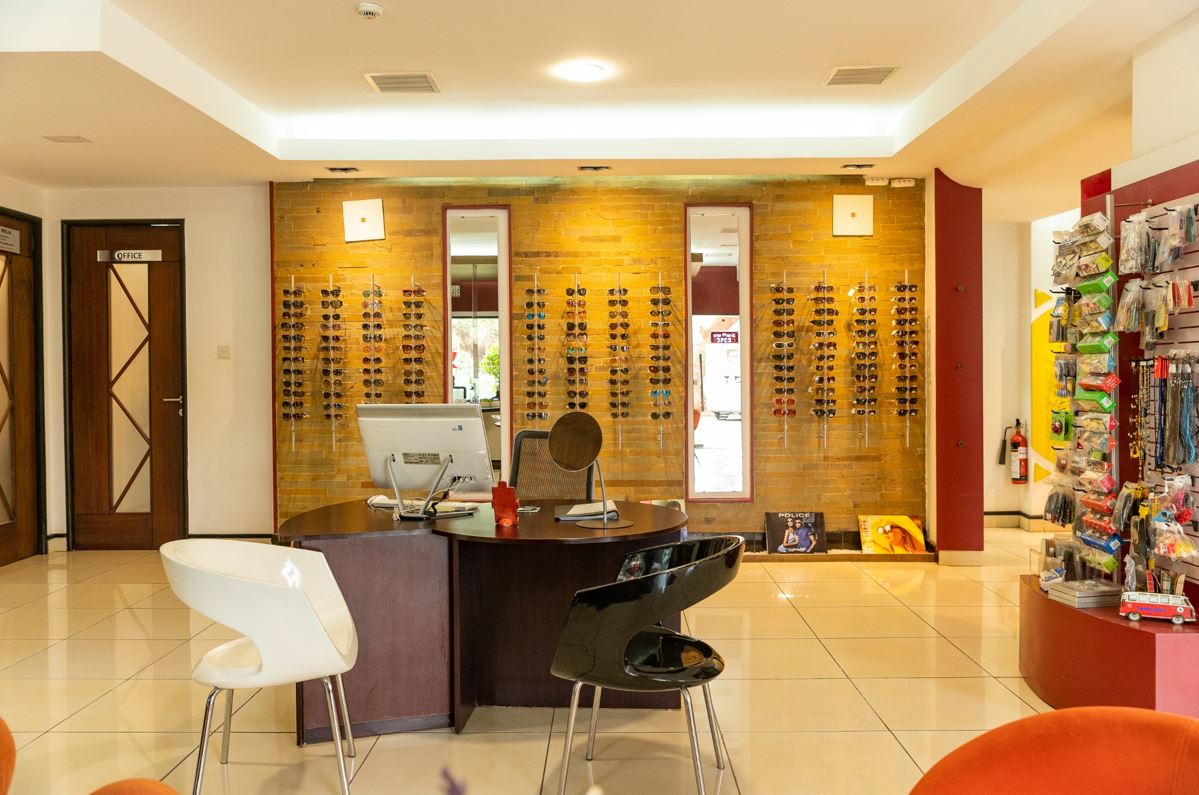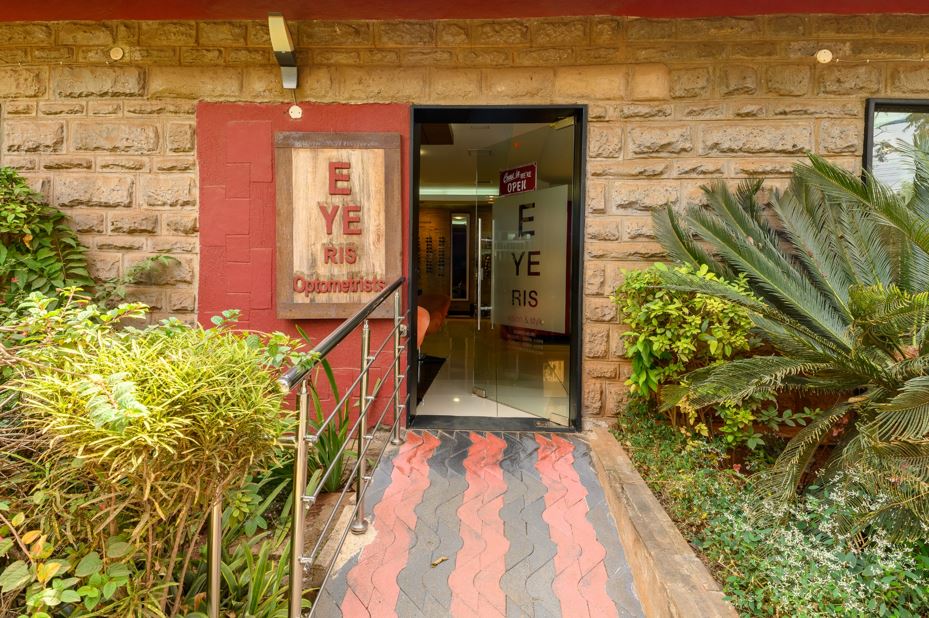If you’re a contact lens wearer, chances are you went through a mini-course in hygiene when you first got your prescription. You know the drill: First wash your hands with soap and water before drying them with a clean, lint-free cloth or paper towel. Then, carefully take the contact lens out of your eye before gently “massaging” it in your hand with some solution to get the debris off. Pop the contact in a case that’s filled with fresh solution before screwing the lid on.
But if you’re being honest, how often do you actually follow all of these steps every single time you remove your contacts? And how often do you do things your optometrist warns you against -like sleeping or swimming in your contacts, or wearing your monthlies for longer than a month thinking “Nothing bad has happened to me yet”?
Here is a guide of some of the common mistakes soft contact lens wearers make, what should be done instead, and the worst that can happen with poor hygiene. This may convince you to change your bad habits for good.

What you’re doing: You let tap water come into contact with your contact lenses.
Why you should STOP: Seems harmless enough, right? Wrong. That’s because tap water isn’t salty like tears are, so contact lenses tend to absorb the water and swell. The contact lens will then “hold” it, which is a problem because water isn’t sterile and contains microorganisms. If your lens swells, it changes how the lens fits on your eye often making the lens tighten on the eye, and can create microscopic breaks in your cornea that microorganisms can get into causing infection. That’s why it’s important not to shower or swim with your contact lenses in (which also increases the chances of them coming out of your eye). In addition, you should never use water in place of solution for storing your contact lenses.
What you’re doing: Your contact lenses are bothering you but you don’t have solution with you, so you use water or your own saliva to wash them before popping them back in your eye.
Why you should STOP: Two words: bad idea. Your saliva is ridden with bacteria that belong in your mouth and not your eye. Putting contacts in your mouth is like putting them in a petri dish – you just don’t want to do that. If you don’t have access to solution and a contact lens case, you best throw the lenses away. Another option is to use lubricating drops made for contact lens wearers (not those for red eye) to try to relieve any discomfort. It’s always wise to carry a contact lens case filled with some solution with you at all times for moments like this.
Also note saline solution and disinfectant solution are different: ONLY disinfectant solution should be used to store contact lenses.
What you’re doing: You re-use your solution.
Why you should STOP: Recycling solution is like begging for an eye infection. All the debris and bacteria that are in your eyes and are on your contact lenses, come off into the solution. So, if you’re re-using the same solution time and again, that means you’re letting your contact lenses stew in a bacteria-ridden pool of liquid – and then putting those same contacts right back into your eye.
If you have any microscopic breaks in your cornea, those bacteria can then infect the cornea. Instead, take care to use fresh solution every single time you need to store your contacts. Alternatively, consider daily disposable lenses.

What you’re doing: You’ve been using the same contact lens case for as long as you can remember.
Why you should STOP: First things first: Go to your bathroom and throw that old case away. Contact lens cases should only be used for three months tops before you replace with a new one.
What you’re doing: You wash your contact lens case with water, and then close it up before letting it dry completely.
Why you should STOP: The best way to keep your contact lens case clean is to wash it with solution, not water, since (as you know by now) water shouldn’t come into contact with your contact lenses. Then wipe the case dry with a clean towel or let it air dry completely before putting the lids back on. Better still, just get a brand new, clean case!

What you’re doing: You use the off-brand solution.
Why you should STOP: When you opt for generic contact solution, you’re playing roulette. That’s because stores that sell their own brands actually purchase the solution from other companies, so you don’t know what kind you’re getting. Talk to your optometrist about the best solution for your own eyes, and then stick to that brand. Switching solutions can lead to allergies, sensitivities and dry eye.
What you’re doing: You’re using contact lenses you got from your optometrist five years ago.
Why you should STOP: You shouldn’t use contact lenses that are several years old. For starters, the prescription might just not be right anymore. But also, the solution the lenses are stored in has an expiration date. So, the lens, when the solution expires, can cause infection and become very uncomfortable because of the pH level change. On that note, make sure to check those expiration dates of solutions when making purchases. Solution can over time break down, especially if exposed to sun or heat, which can be bad considering its two main functions are to not bring infectious material into your eye and to prevent infection.
What you’re doing: You have a prescription for two-week lenses, but only wear contacts once a week for football games – so you use the same lenses once a week for 14 weeks.
Why you should STOP: Sorry, but if contacts are approved to be used for 14 days, it’s two weeks from the time you open that lens package, it’s not 14 days of wear. After that time period is when the lens starts to break down; the surface starts to break
down and take on your protein, mucus and bacteria that normally hangs out with us on our eyelids can lead to infection.
What you’re doing: Your vision is just a little blurry, or your eyes hurt just a little bit, but you wear your contact lenses anyway.
Why you should STOP: Make this your mantra: When in doubt, take them out. You should make sure your eyes look good, feel good and see good – meaning your eyes should look clear and white, not look red or irritated. You should see well and clearly -if you’re not seeing well, that’s a sign that there’s a problem. And then your eyes should feel good, with no physical pain or discomfort. Listen to your body. The first line of defense should be to apply lubricating drops made for contact lens wearers. But if that isn’t enough, just take the lenses out. Inspect the lens, make sure it’s not torn or cut. If it looks like its torn, don’t use it! You can get a scratched cornea, called a corneal abrasion. You can always replace your contact lenses, but you can never replace your eyes!

What you’re doing: You put your contact lenses in after putting your makeup on.
Why you should STOP: To avoid getting makeup on your contact lenses, it is best to insert your contact lenses before applying makeup, and then take them out before removing eye makeup.
On that same note, avoid putting creams or lotions on your hands before handling. Your hands should be clean; put your lenses in first before you handle any products.
What you’re doing: You use waterproof makeup.
Why you should STOP: Contact lens wearers should not use waterproof makeup because if the makeup gets on the lens, it will bind to it. And because waterproof makeup requires an oil-based remover, it will grease up the eyes and the lenses.
What you’re doing: You wear your dailies for longer than a day, your monthlies for longer than a month, etc.
Why you should STOP: Your contact lenses are made of plastic, but they actually have pores to help keep them moist in your eyes. However, these pores can then get dirty and trap debris and dirt in the lens. If you use your contact lenses for longer than recommended, you’re setting yourself up for trouble, including eye irritation, dry eye, an infection or overall discomfort.
What you’re doing: You sleep in your contact lenses.
Why you should STOP: That’s like sleeping with a plastic bag over your head! That’s because sleeping with contacts in your eyes severely limits oxygen transmission. When you are awake, your cornea receives oxygen from the air and from your tears. But when you’re asleep, the cornea receives less nourishment, lubrication and oxygen because your eyes are closed and you are not blinking. Therefore, when you put a piece of plastic — i.e., your contact lens – over the cornea overnight, you are further depriving your cornea of oxygen. This can lead to your contact lens tightening in your eye, causing microscopic rips to the cornea – and if there’s a microorganism also in your eye, that could also lead to infection. Some contact lenses are approved for overnight and extended wear. If you’re dead-set on being able to sleep in your contact lenses, you need to talk to your optometrist about getting a prescription for one of these types of lenses.
Note: If you experience any pain or discomfort from your contact lenses, remove them and contact your eye care practitioner. Eye infections, if left untreated, can lead to temporary or permanent blindness.
CHECK OUT THIS OFFER
Eyeris The Optometrists
EYERIS always aims at exceeding expectations. When you become a patient of this practice, the health of your eyes will be their first concern, the second being to get the best possible visual performance for all your lifestyle needs.


Meet The Team
With a team of optometrists and dispensing opticians who specialize in visual correction and thorough care of the eyes, Eyeris has the latest techniques and equipment used in examining and safeguarding one’s sight.

Vision and Style being their driving words, EYERIS is committed to setting a standard of excellence. The practice prides itself with the latest advances in eye health care practices having an array of the most up-to-date vision care technology.

Some of the services and products include routine eye examinations for persons of all ages; thorough retinal examination using advanced technology; dispensing of spectacles by professionals who will advise you on the choice of the frame with comfort and cosmesis in mind; designer and budget eyewear; contact lens fitting, including specialized lenses for astigmatism and keratoconus and low visual aids.
Visit Us At Harmony Centre, 43 General Mathenge Drive, Westlands
CLICK HERE for Directions

Contact us for consultation
Mobile: +254 718 181 000 | +254 735 181 000
Email: info@eyeris.co.ke
Follow us on Social Media

Find Out More on Eyestrain As A Result Of Extended Use Of computers




